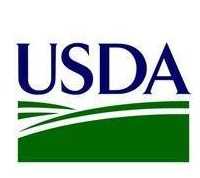WASHINGTON, D.C. – September 6, 2012 – (RealEstateRama) — Families with young children now account for 40% of the nation’s homeless population and in the course of the year, more than 1.3 million children are homeless. At the Law Center, we aim to end family homelessness in America.
Ø Children and Youth without permanent homes — those living in shelters or with another family — often lack the means to advocate on their own behalf. They also face problems enrolling and participating in school.
Ø As a result, Congress passed the McKinney-Vento Homeless Assistance Act in 1987. The McKinney Act protects the educational rights of homeless children and youth.
Ø Our work strengthens legislation that guarantees homeless students’ right to education. We train state and district education workers. And, we pursue litigation when necessary to protect America’s homeless students.
Ø Homelessness is such a pervasive problem in our communities. Education is the one sure way for young people to break the cycle of poverty and homelessness in their families. Our Children & Youth Program breaks through these barriers and equips children’s advocates with the tools needed for educational advancement.
Child and Adult Care Food Program (CACFP)
CACFP is a federal nutrition entitlement program that provides subsidies to shelters and day care centers for meals provided to qualifying adults and children. Under the program, homeless and domestic violence shelters may receive a subsidy for meals provided to children living in such facilities. Shelters participating in CACFP also qualify to receive donated agricultural commodities through the federal commodities program or to receive cash-in-lieu of commodities.
To participate, emergency shelters must serve meals in a congregate setting (meals served and eaten in a group setting); serve children who are 18 years old or younger; provide residential services to homeless children and their parents; be a public or private nonprofit organization; and follow state and/or local health and safety codes.
Shelters may receive reimbursement for up to three meals (breakfast, lunch, and dinner) or two meals and one snack (e.g. lunch, dinner and a snack), per child, each day. In addition to reimbursements, shelters may receive donated agricultural commodities from the U.S. Department of Agriculture or cash-in-lieu of commodities, for each lunch or supper provided.
Although a federal program, CACFP is administered in each state by the state’s designated CACFP agency, usually located within a state’s Department of Education. Shelters wishing to participate may apply through the state CACFP agency.
For more infomation on the CACFP program, visit wiki.nlchp.org.














